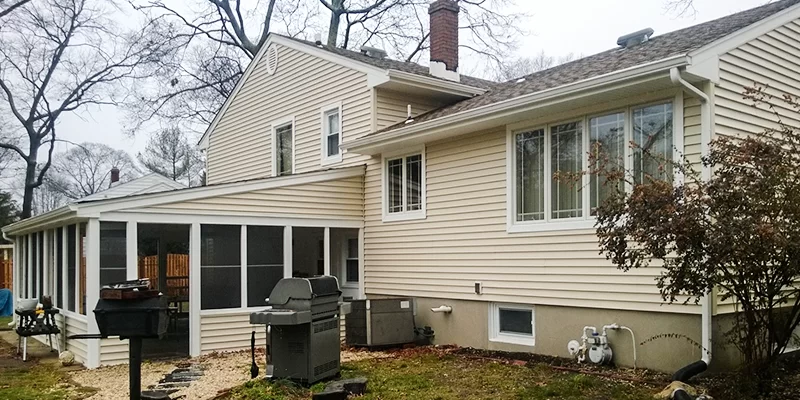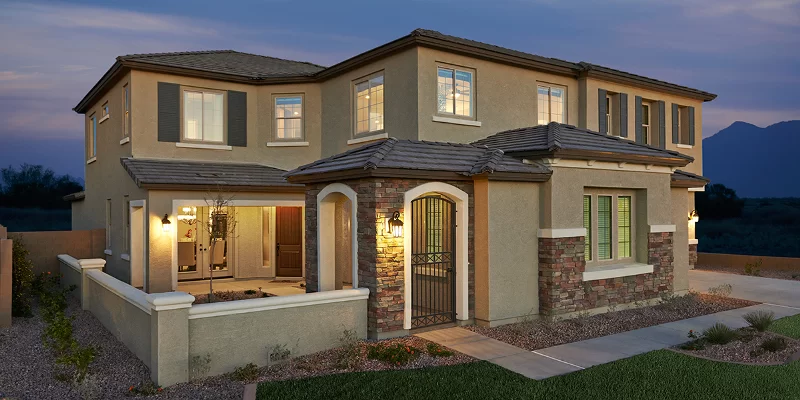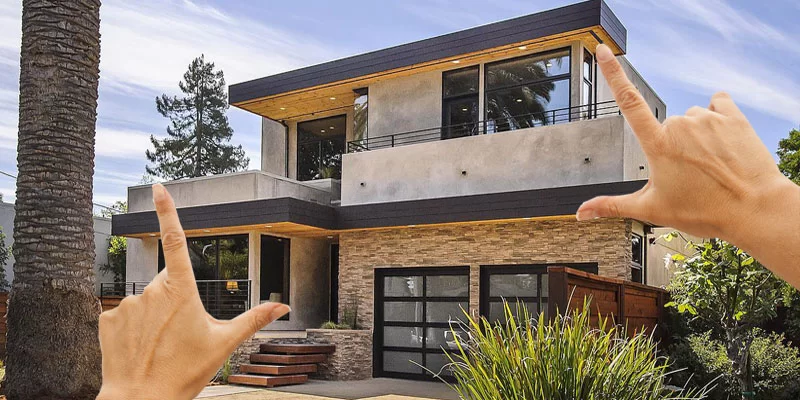
What is better for the facade — siding or plaster
Our experts — professional builders — have analyzed the strengths and weaknesses of two types of facade finishing: siding and plastering, analyzed the properties and features of each type, which will help you choose the most suitable for you.
Siding

Siding is called narrow long strips that are attached to a frame fixed to the wall. The material from which the slats are made can be different — PVC, wood, metal. Wooden siding is practically not used, although initially the siding was wooden, metal is used only for public or industrial buildings. Vinyl siding is the most common and commonly used for finishing low-rise housing. The frame for fastening the slats can be assembled from wooden bars or thin-walled steel profile.
When cladding with siding, the so-called “ventilated facade” is often made, the design of which includes a layer of insulation attached to the wall, an air gap between the insulation and the cladding, and, in fact, the sheathing itself on the frame.
Plaster

Wall plastering is a traditional type of facade decoration that requires highly qualified performers, since the plastering technology is complex and consists of several successive operations. First, the wall is cleaned of dirt, leveled and repaired, then primed, a reinforcing plaster mesh is attached and several layers of mortar are applied in several steps. The plaster layer is leveled, polished, if necessary, it is given a special texture, then painted with facade paints.
There is a technology that allows you to insulate the walls of old buildings — the so-called «wet facade». Plastering using this technology includes the installation of an insulating layer attached to the wall, on which a plaster layer is then applied along the grid.
Table of advantages and disadvantages
|
|
|
|
|
Siding
|
+ ease of installation;
+ the ability to perform cladding work at any time of the year and under any weather conditions;
+ no need for painting or other additional finishing;
+ long service life, calculated in tens of years;
+ a wide range of colors to choose from;
+ ease of maintenance and repair — if necessary, damaged slats are replaced;
+ the possibility of increasing the heat-shielding ability of walls when installing a ventilated facade with insulation.
|
— the possibility of damage in strong winds;
— instability to high temperatures — danger of deformation;
— possibility of damage due to mechanical impact;
— although the siding itself is fireproof, there is a possibility of ignition of the insulation under it if combustible varieties of insulation are used.
|
|
Plaster
|
+ environmental friendliness, since environmentally friendly materials are used for plastering;
+ the vapor permeability of the walls is preserved, which is important for creating a healthy microclimate in the premises;
+ reliability and durability + plaster service life — many decades;
+ rich possibilities of decorative design by texture and subsequent coloring;
|
— complex finishing technology, which can be performed only by highly qualified performers;
— the possibility of performing work only in strictly limited conditions — at a positive air temperature in good weather;
— the risk of cracks at large temperature differences and uneven settlement of the building;
— the need for periodic repairs — updating the color.
|
The main differences between materials
The main differences between the two methods of finishing exterior walls are as follows:
-
the complexity of the technology for performing finishing work: cladding with siding is much easier and faster than plastering. Plastering is only possible for experienced professionals;
-
depending on the weather conditions in which the work is carried out. Sheathing with siding can be done in any weather, unlike plaster;
-
strength and resistance to external influences — plaster is more reliable and does not lend itself to mechanical stress, as well as temperature changes;
-
maintainability — siding is easier to repair, if the plaster is damaged, you will have to repair the damaged area, and then repaint the entire facade;
-
the cost of materials and labor in both cases is approximately the same.
How are the materials similar?
Siding and plaster have only one similar feature — these materials can be used for exterior decoration of building facades.
Conclusions: It is impossible to make an unambiguous conclusion in favor of one or another material, each of them has its own advantages and disadvantages. The choice depends on personal preferences and architectural features of the building.

Добавить комментарий
Для отправки комментария вам необходимо авторизоваться.